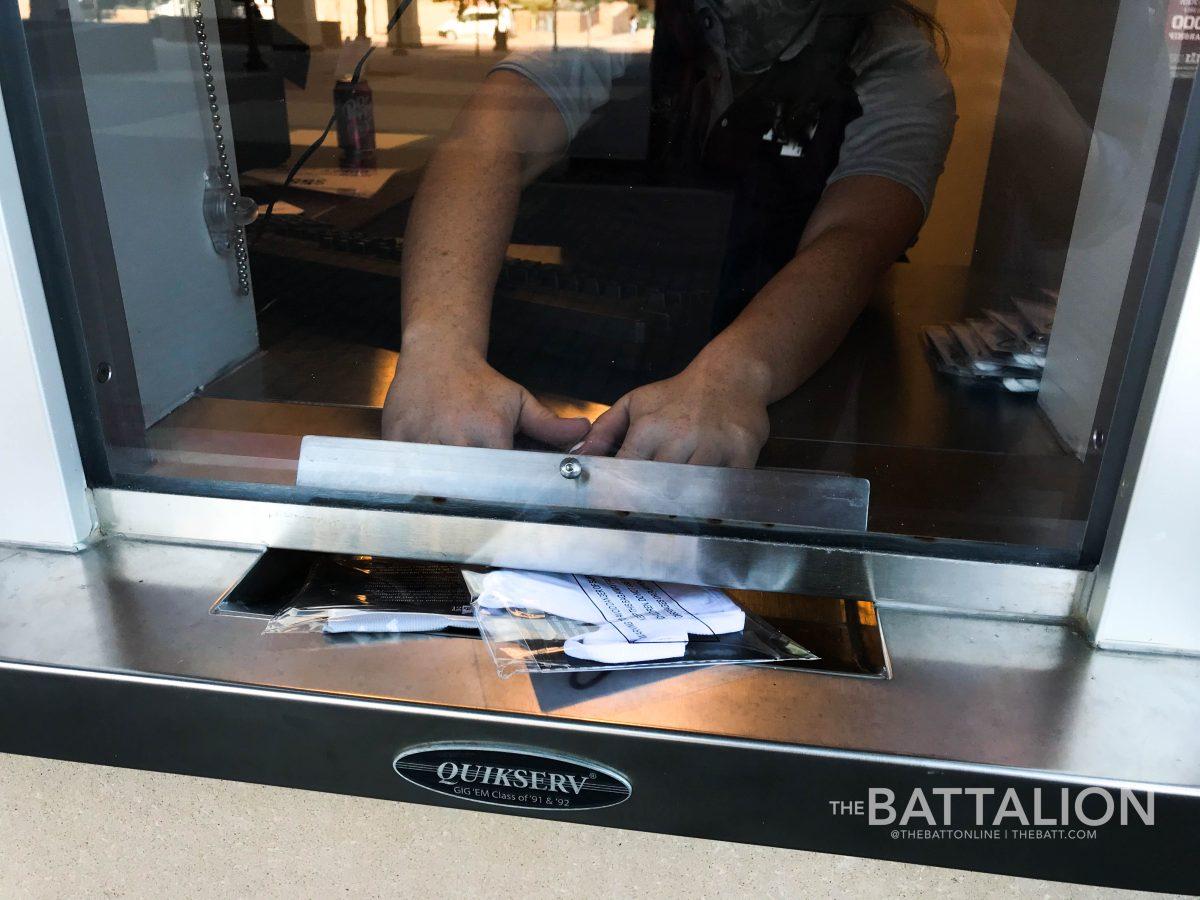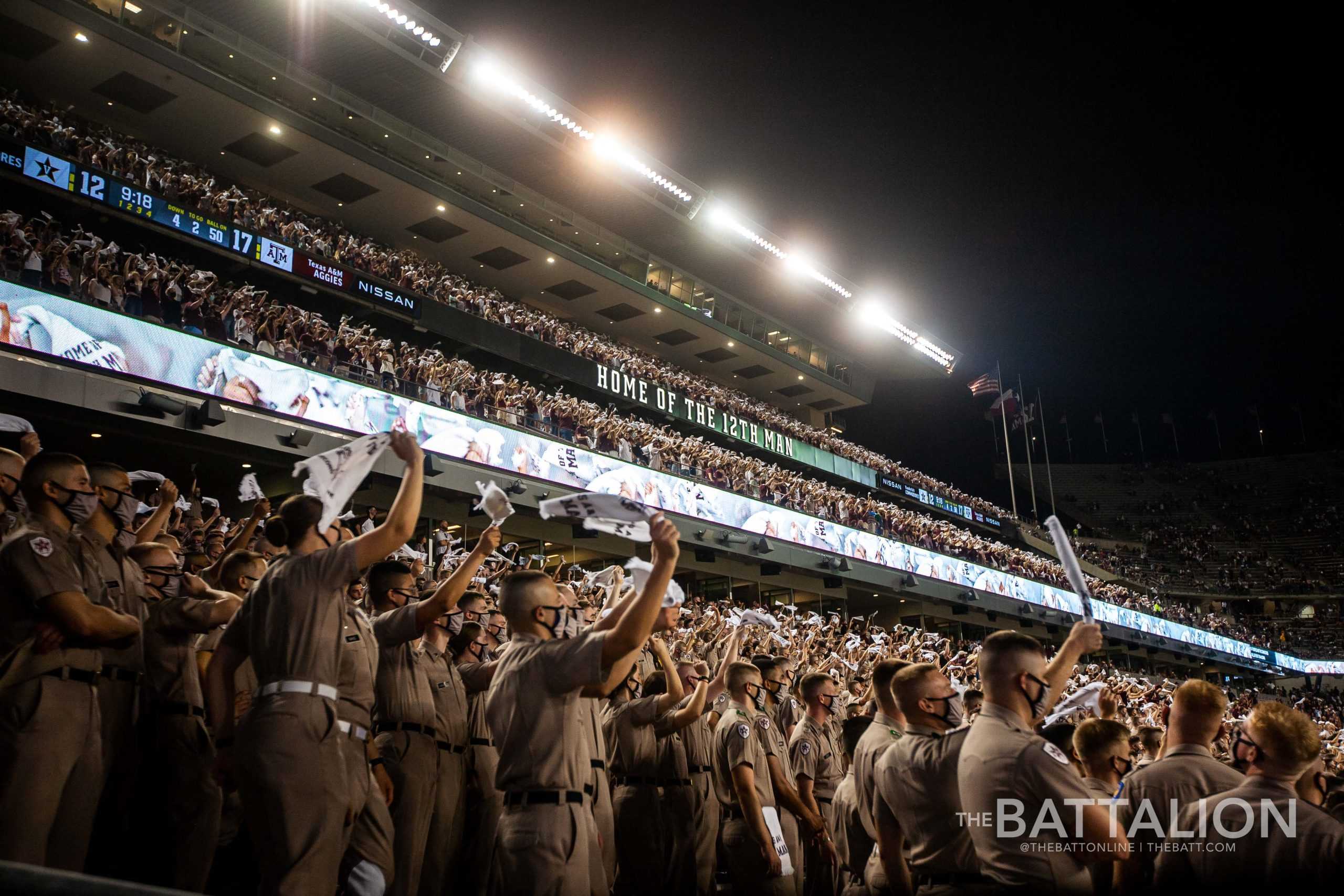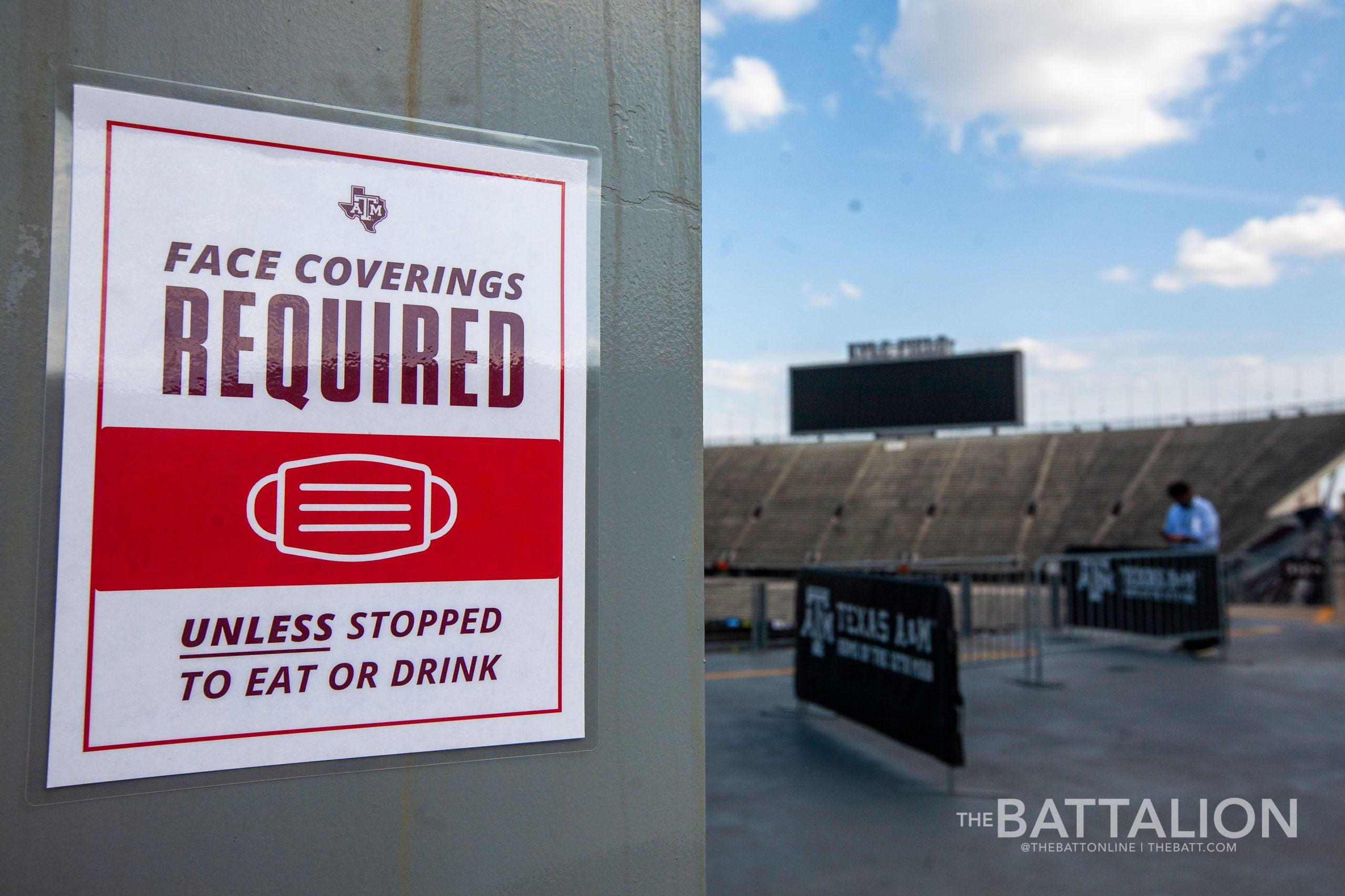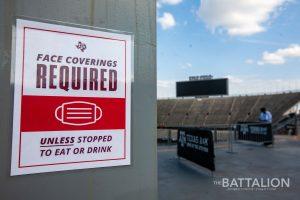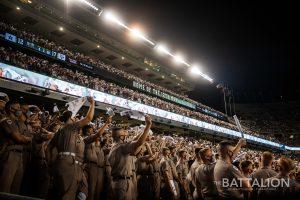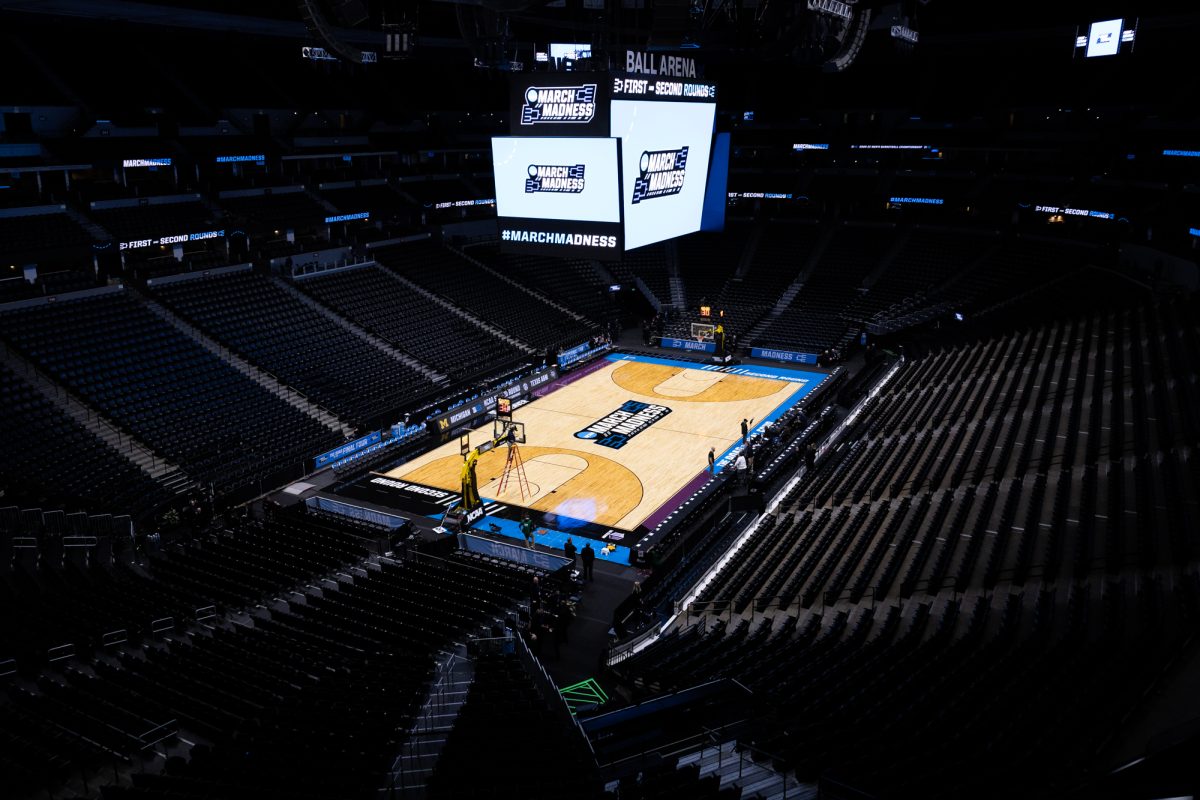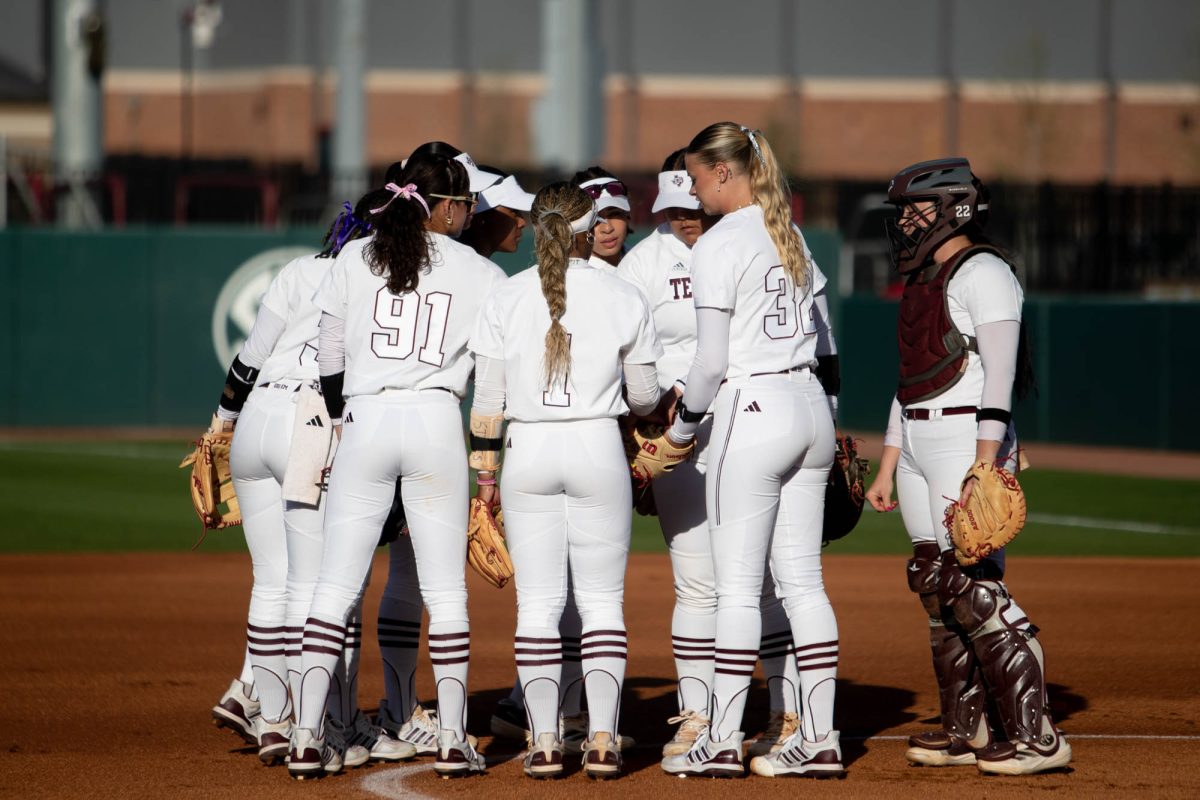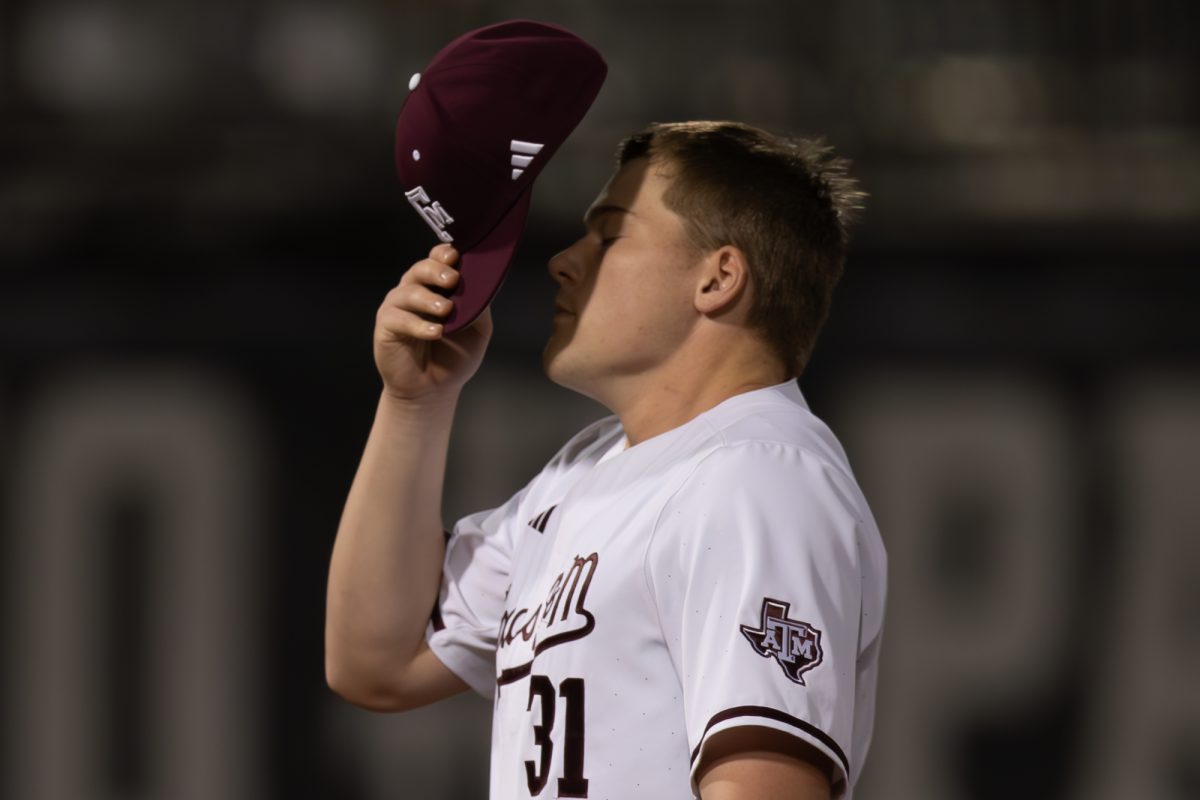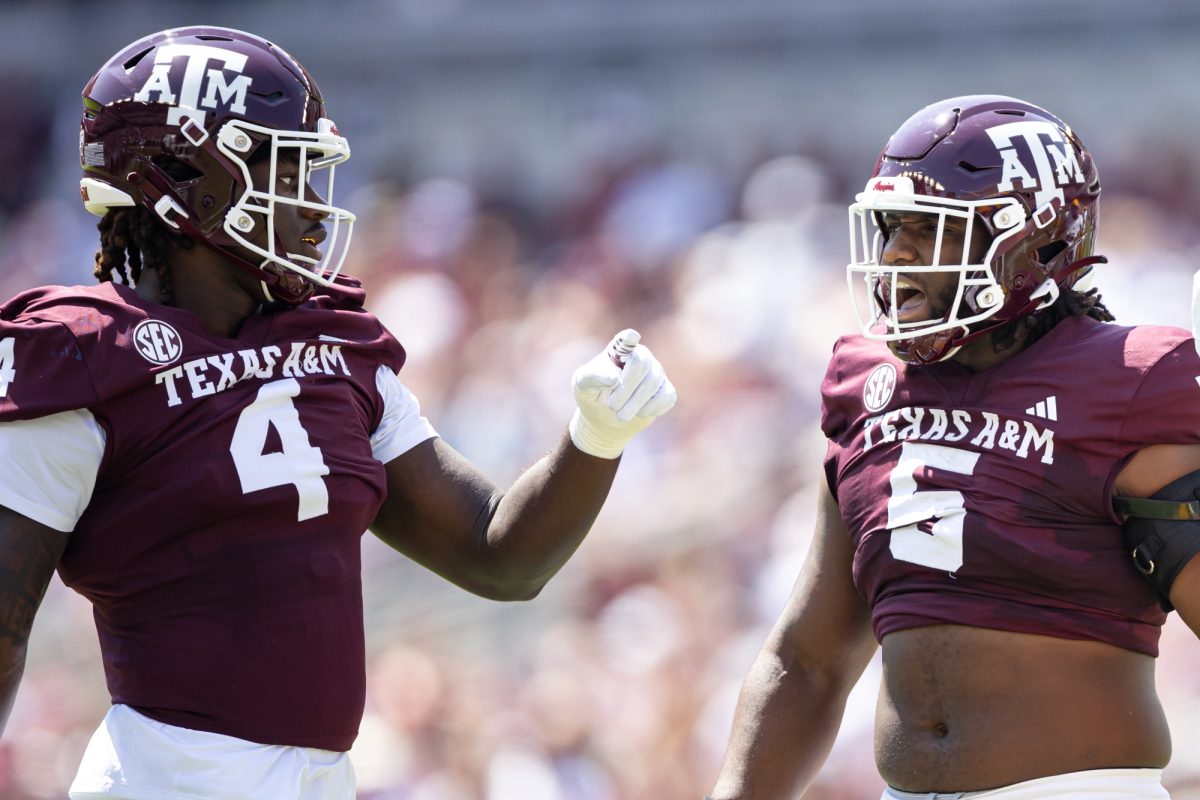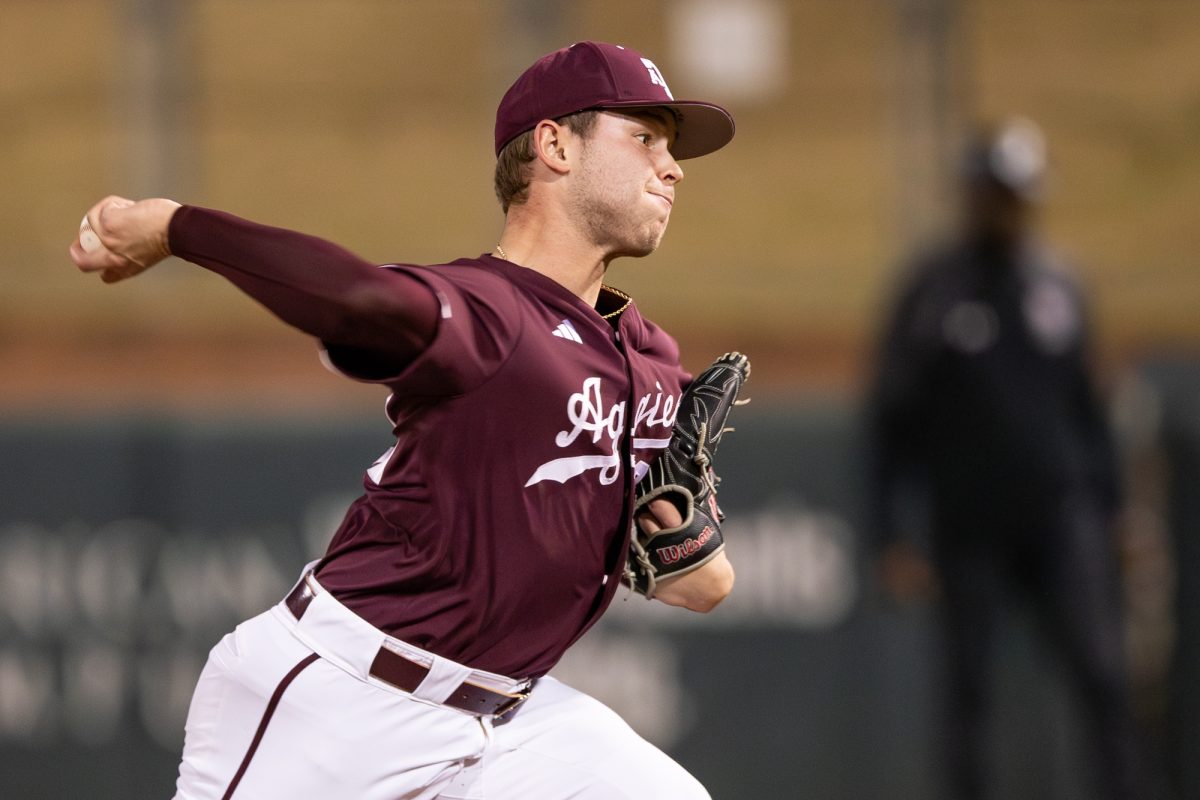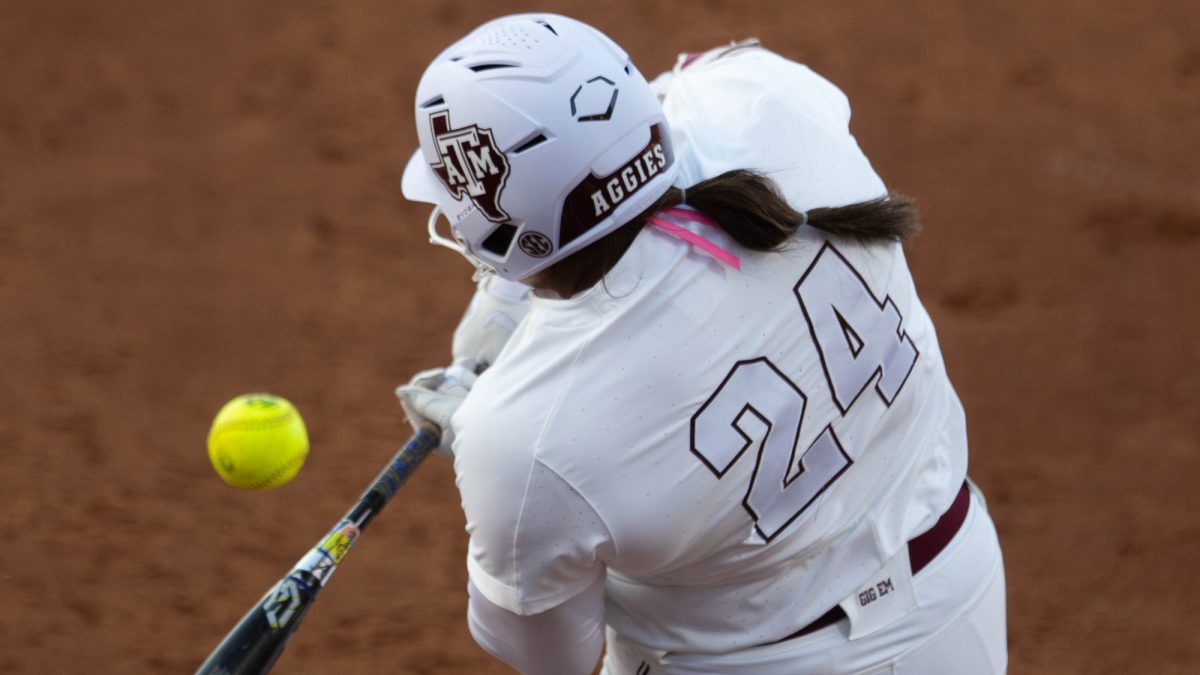Late in the first half of SMU’s 30-27 win over Memphis on Oct. 3, police removed the student section from Gerald J. Ford Stadium for not adhering to face covering and social distancing guidelines.
Texas A&M Athletics implemented its own COVID-19 protocols for its first home game against Vanderbilt on Sept. 26, which saw an attendance of 24,073.
Heading into A&M’s second home game against No. 4 Florida this Saturday, Director of Athletics Ross Bjork said he was pleased with the overall success of A&M’s protocols, but there are still areas that need improvement.
“For the most part, everyone followed the protocol upon entering the stadium, pregame and the first half, and then I think after that we let our guard down,” Bjork said. “As the game went on, people want to migrate, they want to see friends, they want to hang out. Totally understandable, and that’s where we can reinforce our messaging. Overall I think we did a great job and now we just need to shore some things up as we move into Florida.”
Prior to the season opener, Kevin Hurley, A&M senior associate athletics director for facilities, events and construction, said A&M’s goal for each game is to operate as safely as possible and not jeopardize the next game.
“Understand the mentality — we’re trying to get to Game 2,” Hurley said. “The only way we can do that is to be successful in Game 1.”
In order to reinforce the protocols ahead of this weekend’s game, staff from the Athletic Department and the Department of Student Affairs have been at ticket pull this week, handing out reminders of the facial covering and social distancing requirements for Kyle Field, Bjork said.
“We think through education this week at ticket pull that we can really fine-tune our messaging,” Bjork said. “We’ll do a lot of things on social media, record a video, utilize the leadership of the yell leaders to reinforce that messaging and just remind people that the face covering is a requirement at all times.”
Bjork said the failure to adhere to the protocol in Game 1 is not solely the fault of the students. There were some miscommunications among the stadium workers that led to failures of the protocols, Bjork said.
“There were some mixed signals that were sent and some of the ushers were saying, ‘Keep your masks on,’ and some ushers were saying, ‘You don’t have to keep your mask on,’” Bjork said. “That was just a mistake and something we can easily fix. That will lead to a lot more consistent follow up and enforcement if we do have to.”
Bjork said there will be an increase in the number of staff members in the student section to better enforce the protocols. Removal of uncooperative individuals will continue to be a last resort, Bjork said.
“If someone’s not paying attention or they’re not following the protocol, then we have a duty to remove them from the stadium,” Bjork said. “We have to do a better job with the operational pieces of it, the enforcement piece of it, the communication of it. We’re asking the fans, the 12th Man, to do their part and then we have to do a better job as well.”
Hurley previously said uncooperative individuals would be given “seven or eight” chances to wear their masks properly before being removed from Kyle Field.
“If we have a problem with an individual, we will go get a university police officer or law enforcement and we will ask you to depart,” Hurley said. “We sure don’t want to do that. Everybody has to participate in this for it to work.”
Almost two weeks after the Vanderbilt game, Bjork said he is not aware of anyone contracting COVID-19 after attending the game, though he said that doesn’t mean the game hasn’t resulted in positive cases.
“We’re nine days out from the game, we’re probably in that window where we would see an increase [in positive cases],” Bjork said.
According to A&M’s COVID-19 dashboard, 95 new cases among students and 13 among faculty and staff have been reported since the Vanderbilt game on Sept. 26. The dashboard was last updated on Oct. 7.
In the event of a rise in positive cases, Bjork said it is important to remember that the data could be related to game day activities rather than game attendance.
“It’s not only the game, it’s if you’re not at the game, what’s your behavior? Where are you going? Are you going to a house party, are you going to a restaurant/bar?” Bjork said. “It may be more related to the game day weekend versus being in the stadium where you’re outside and there’s air flow.”
Since the athletic department still doesn’t fully know the effects of the Vanderbilt game, Bjork said he doesn’t anticipate a change in capacity restrictions at Kyle Field.
“At this point there hasn’t been any indication one way or another,” Bjork said. “We’re just monitoring everything, let’s see if there’s any data that comes in this week from the Vanderbilt game. Let’s make sure we do all the right things at the Florida game so we don’t lose any opportunities, and then let’s see if there’s any impact. That’ll dictate where we go.”
In an appearance on A&M’s Studio 12 radio show in August, Bjork said the SEC’s stance on the 2020 football season was to wait to make any decisions until they had sufficient data. As far as tailgating in Aggieland goes, those sentiments remain the same.
On Oct. 4, A&M announced it would extend its ban on tailgating to include Saturday’s matchup against No. 4 Florida, a decision Bjork said was a result of insufficient information regarding how the game day tradition would affect the community.
“In this case with the Florida game decision, we probably just didn’t have enough data to tell us what the impact was from the Vanderbilt game,” Bjork said. “One of the things we’ve learned throughout this is the more time you have, the better information you have and wait as long as possible to make decisions. In this case, there just wasn’t enough data to tell us one way or another so let’s take the safe route and not have tailgating.”
While the Vanderbilt game served as a test to see if the protocols worked, Bjork said he was ultimately pleased with how well the protocols worked.
“Last week we had about 24,000, so we were about 3,000 short of 25 percent,” Bjork said. “Overall it was a great experience and we learned a lot and we know that we can get a few more thousand in there.”
Bjork said success with the operation of this weekend’s game will dictate how quickly everything can return to normal.
“The biggest thing is we analyze all of this if we want to start bringing things back, whether it’s increased capacity or the band on the field or tailgating — we have to do our part,” Bjork said. “We’re asking people to show great leadership and make the commitment to those Core Values of being excellent and selfless service. Let’s do this game right so we can continue to not only open things up but also just be able to go to games.”
Shoring up stadium regulations
October 7, 2020
0
Donate to The Battalion
$1965
$5000
Contributed
Our Goal
Your donation will support the student journalists of Texas A&M University - College Station. Your contribution will allow us to purchase equipment and cover our annual website hosting costs, in addition to paying freelance staffers for their work, travel costs for coverage and more!




